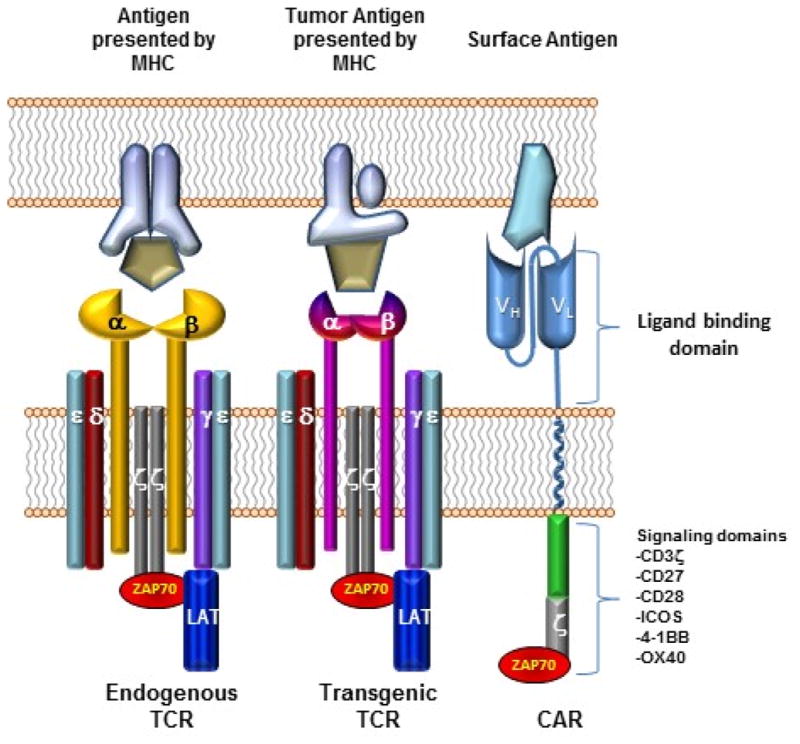Figure 1.

Comparing basic structure of engineered T cell receptors and chimeric antigen receptors. Endogenous T cell receptors include paired alpha and beta chains associated with delta, epsilon, gamma, and signaling zeta chains. Most transgenic engineered T cell receptors also rely on recruitment of endogenous downstream signaling molecules such as LAT and ZAP70 to transduce the activation signal. Both endogenous and transgenic T cell receptors see intracellularly processed antigens that must be presented in the context of the Major Histocompatibility Complex and require costimulatory signals (not shown) for complete T cell activation. Chimeric antigen receptors, on the other hand, lack alpha and beta chains. The extracellular portion of a chimeric antigen receptor consists of single chain variable fragments derived from antibody heavy and light chain variable domains. Typically these are then fused to a transmembrane domain, an intracellular costimulatory domain and an intracellular zeta chain domain. Again, chimeric antigen receptors must recruit endogenous downstream signaling molecules to transduce activating signal, but costimulation is provided in cis and in response to the same activating signal. Chimeric antigen receptors see surface antigens independent of the MHC and are therefore not tissue type restricted.
